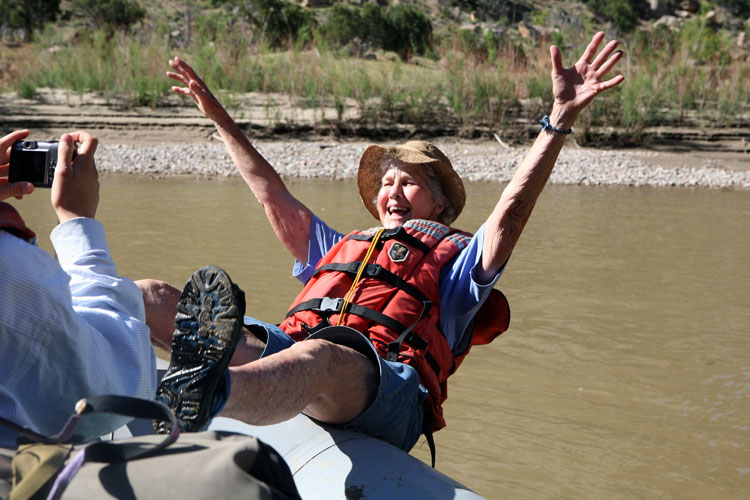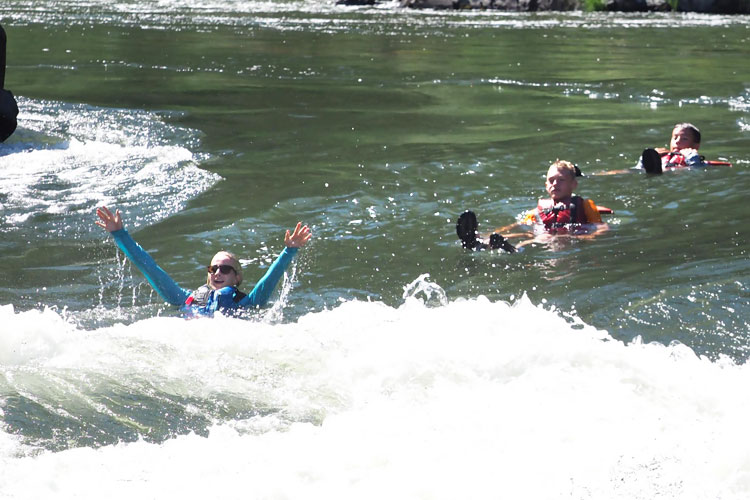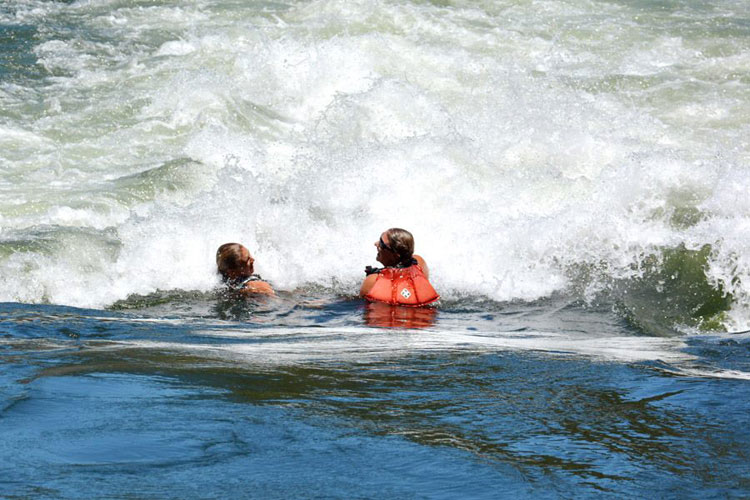A how-to for the what-if
The first question we get asked during our safety orientation is usually: “What if I fall in?”
And our first answer is always: “Relax.”
That’s sometimes easier to say than to do, but still, it is the best advice: Relax.
Here are a few hints to help turn the thing you might fear the most into the thing you could enjoy the most:
1. Be proactive. It is always better to swim intentionally before you swim unintentionally. If you get a chance, get in the river when you want to get in rather than when the river wants you to get in. Your confidence level will go way up (and, advantageously, your chances of accidentally swimming will go way down*)
2. Relax. Falling out of a raft is not like falling out of an airplane; someone has almost certainly done it in exactly the same place before. You need your wits more than anything else, so gather them.

3. Protect yourself. You don’t want to hit rocks, so get everything up on the surface of the river and orient your vitals (head, organs, face) so that they aren’t in the lead. The simple mantra is: “On your back with your feet facing downstream and your toes and nose out of the water”. Think “low profile/no impact” – and if you do hit something, hit it with your non-vitals (feet, butt, elbows).
4. Orient yourself. Chances are you’re right next to the raft. A quick, calm response will get you back in the boat; a confused, frozen one will get you churned. Open your eyes and your ears; there are almost always other people nearby to help you. Make contact with them (visual, verbal, and eventually physical) and a long swim can be a short one.

5. Breathe. Take a breath in the troughs (between waves) and hold it for all the white parts. The white parts are foam: aerated, bubbly water that is more airy than watery. Your p.f.d. (personal flotation device, aka lifejacket) will float you in water, but not in air, so when you hit the white parts, you’re going under. Expect it. Take a breath early and hold it until your head comes out the other side, then grab another quick breath between waves, then hold it again. Keep doing that until you are laughing or back in the raft or both.

6. Act. You might feel helpless, but you are not. You can protect yourself and rescue yourself at the same time. Oftentimes, the best act is to just relax and ride it out, but even then you can pick a route, miss a big rock, prepare yourself for the big wave, and be ready to reach out for that welcoming hand that will surely be coming from the nearest raft. You can surrender without giving up. Once in calmer water, (below or even in the middle of the rapid), you can roll over and Michael Phelps it to a raft (your original one or your new one), just keep your feet up on the surface and pointed downstream-ish.
That’s it. Follow these simple and logical steps and you can turn your wildest fears into your wildest fun. Happy swimming!
And here are a few hints for not making it worse:
1. Don’t try to stop yourself by putting your feet down. It is really tempting to think that you can just stand up and halt the action, but you rarely can and trying to do so has the potential to make things worse. The nightmare of every river person is a “foot entrapment”, a situation that is as terrifying as it sounds. If you want to see your guide panic and lose their temper, try to stand up in a rapid. Actually, just don’t.
2. Don’t swim for a tree in the current. The only thing more terrifying than a foot entrapment is getting stuck in a strainer (equally as bad as it sounds). Water goes through branches, people usually don’t; (think: spaghetti colander). If you see a tree, swim the other way.
3. Don’t dive headfirst. Ever.
*This isn’t a scientifically- proven fact, but rather a river-validated truth. Here’s what we’ve found: The person who is most likely to fall in is the person who least wants to fall in. This is because that person is usually afraid of falling in and, as we all know, we’re not at our best when we’re afraid. When we’re afraid, we tense up and freeze and then we, well, then we fall in. By swimming intentionally, (and realizing that swimming is nothing to be afraid of), we relax and lose our fear, thereby decreasing our chances of falling in (and also making someone else the person who least wants to fall in).
